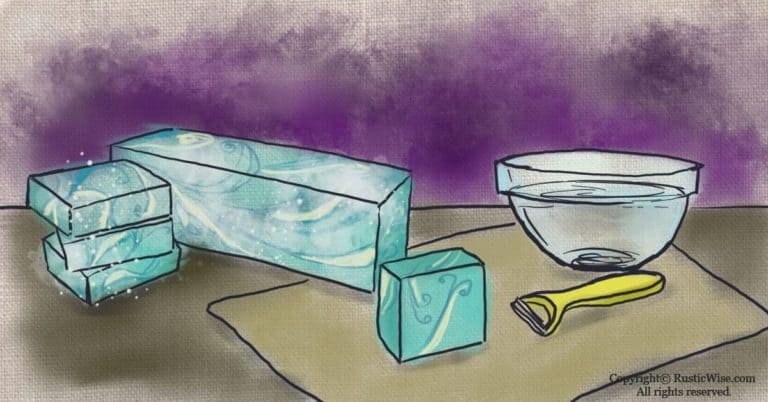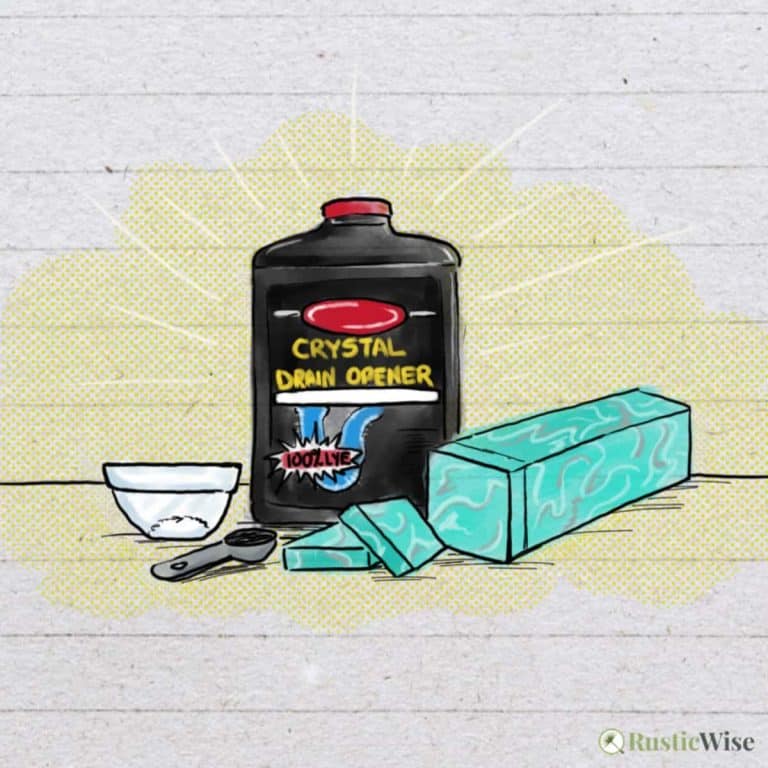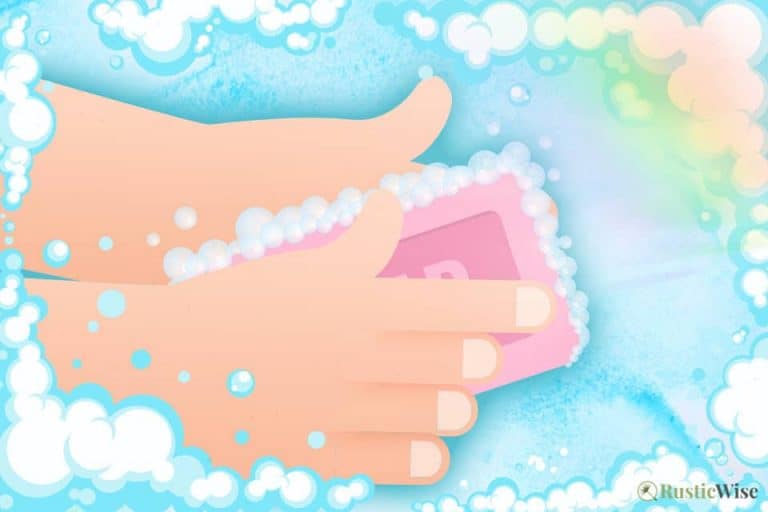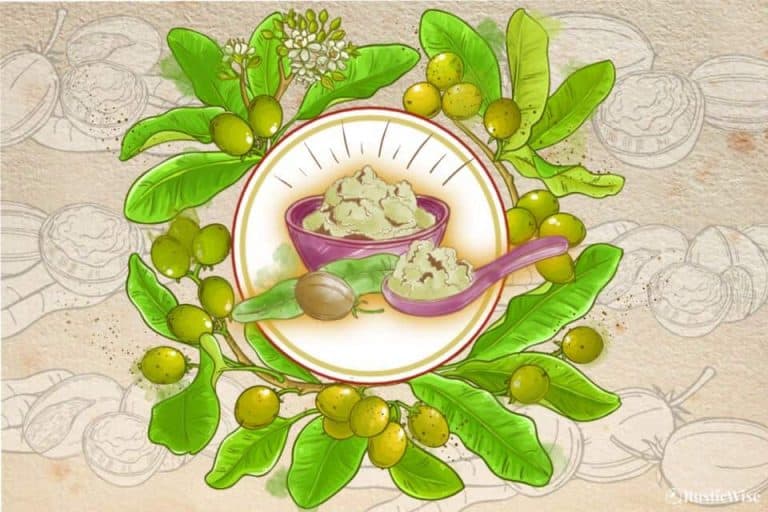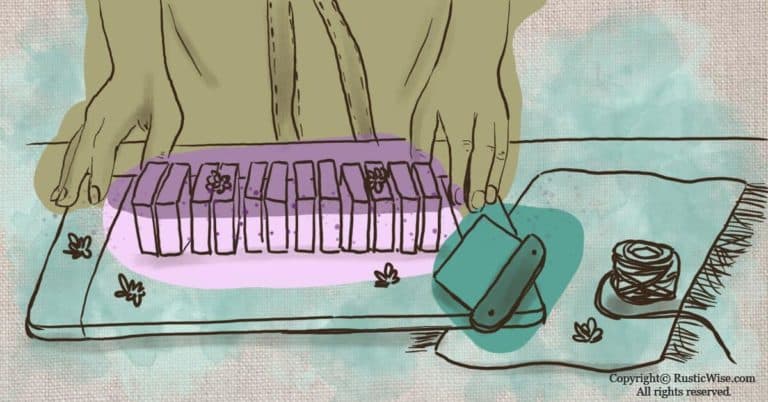What Is Whipped Soap and How To Make Your Own Decadent Skin Treat
You might have seen pictures of candy-colored soap that looks good enough to (almost) eat. Meet whipped soap—the latest trend in body care. If you’re wondering what is whipped soap, it’s a type of body wash that also works as a soap, shower gel, or shaving cream.
Sometimes called cream soap, or body soufflé, this cleansing powerhouse leaves your skin feeling clean, yet soft and moisturized. We’ll look at key ingredients in whipped soap, benefits, plus an easy way to make your own!
If you’re looking for a buttery, luxurious, and decadent body product to add to your arsenal, check out what the fuss is all about.
What is whipped soap?
Whipped soap is a type of body wash with a creamy consistency—think whipped cream or shaving cream. You just need a few drops of water to turn it into a luxurious, bubbly body wash. It’s suitable for hands and body.
Most cream soaps use a variety of skin moisturizing oils or butters, such as jojoba oil, grapeseed oil, shea butter, and coconut oil. To enhance the sensory experience, most whipped soaps use therapeutic essential oils, or fragrance oils for long-lasting scents.
Whipped soaps offer a decadent, foaming washing experience (because everyone wants to get spoiled once in a while!).
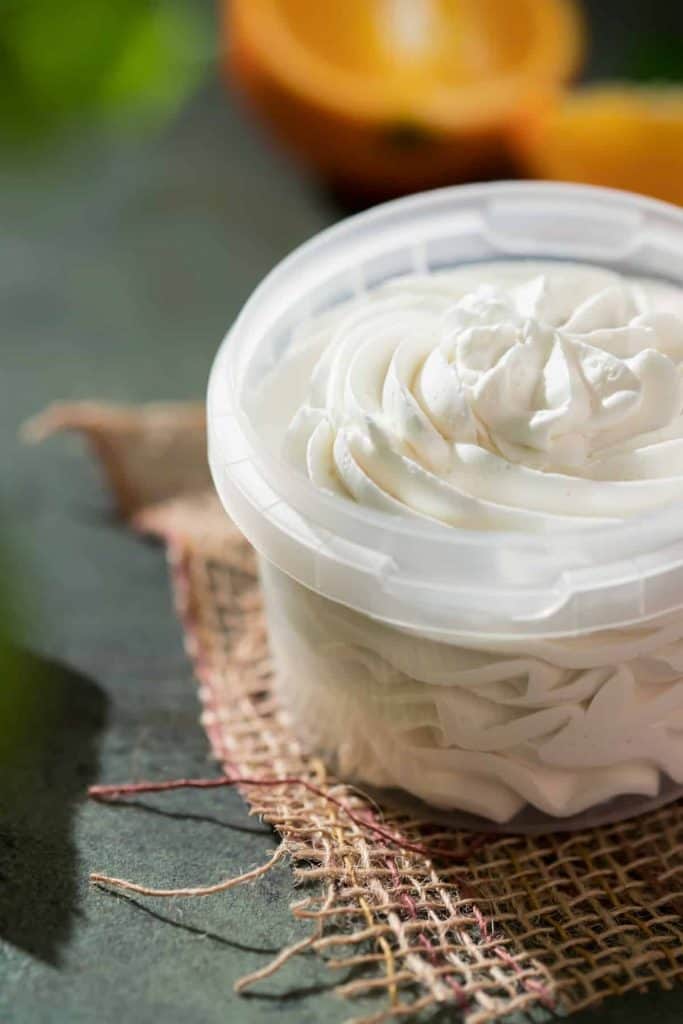
How to use whipped soap
Use whipped soap just as you would shower gel, or traditional soap. If you’re looking to declutter your shower, or minimize your beauty products, whipped soap works as a shower gel/shaving cream/regular soap—all-in-one!
It can clean your hands, body and hair. Or, you can use it as a shaving cream alternative.
A little goes a long way when it comes to whipped soap. Just a small quarter-sized amount may wash most of your body. Remember that whipped soap, when lathered, produces a lovely foamy texture that’s easy to spread.
Tip: To avoid getting water into your soap jar, it’s a good idea to keep a spoon to scoop out whipped soap each time you use it.
Using whipped soap in the shower
To use whipped soap, apply a small amount to your hands to create a lather. (Alternately, you can use a washcloth or loofah to apply whipped soap.) Spread onto your body in a circular motion and all the areas you would normally apply shower soap. Finally, rinse clean!
Using whipped soap as a shaving cream
With its creamy texture, many people like to use whipped soap as a shaving soap. Apply a generous amount to the area you’re shaving.
Let the whipped soap soak in for several minutes before shaving like normal. The soap is water-soluble and rinses clean away.
Using whipped soap as hand soap
Apply a small pea-sized amount to your palms. Rub your hands together to create a luxurious lather while singing the Happy Birthday song twice (at least 20 seconds). Follow up with a rinse just like regular soap.
Using whipped soap in the bath
Add a bit of whipped soap in the bath to enjoy the skin loving oils and have fun lathering up.
Tip: While whipped soap is suitable for most skin types, those with sensitive skin may want to do a patch test first. Place a small amount onto skin. Wait 24 hours to see for any adverse reactions.
What’s in whipped soap? A closer look at the ingredients
There are many recipes for whipped soap. Whether you’re using a store-bought variety, or thinking of making your own DIY soap using a pre-made foaming butter base, it’s best to check out the ingredients first!
Some commercially produced cream soaps may use sulfates such as sodium laureth sulfate (SLES) to create lather, while others are free of parabens and sulfates. Some may use artificial fragrances, while others stick with natural essential oils.
Here are a few key ingredients found in most whipped soaps:
- Sodium Cocoyl Isethionate (SCI): This is a mild surfactant that’s derived from coconut oil and isoethionic acid (which is a type of sulfonic acid). It’s used as a cleansing agent and surfactant which works to break down the barrier between oils and water, which helps to remove dirt and oil particles. It’s also biodegradable. The U.S. Environmental Working Group (EWG) gives it a rating of 1 which means it has a low hazard.
- Glycerin: A natural humectant, glycerin moisturizes the skin from the inside out. It acts to attract and keep moisture on the skin.
- Carrier oils: There are many skin nourishing oils that artisanal soapmakers or manufacturers use for their unique fatty acid composition. A few liquid or “soft” oils include argan oil, avocado oil, grapeseed oil, jojoba oil, and sweet almond oil. A few “hard” oils include shea butter, coconut oil, and palm oil (or palm kernel oil).
- Stearic acid: You can find naturally occurring stearic fatty acid in both animal fats (lard and tallow) and vegetable oils and butters (coconut oil and palm oil). It’s a key component in commercial shaving creams and other skincare products. It works as a thickener and stabilizer.
- Sorbitol: Sorbitol is a sugar alcohol which acts as a humectant and boosts lather.
- Essential oils or fragrance oils: Fragrance oils (FO) are lab-derived scents that are long-lasting and less expensive than plant-derived essential oils. Because of this, most whipped soaps use FOs. EOs, on the other hand, contain therapeutic properties. The downside is you need to use more EOs to get a decent aroma, and the effects don’t last as long.
- Radish root: Some natural soapmakers like to use radish root (Raphanus Sativus), a natural extract, as it acts as a plant-based skin-conditioning agent with astringent properties.²
Benefits of whipped soap
If you haven’t tried whipped soap yet, you might like it for the following benefits:
- Moisturizing properties: With plenty of skin moisturizing oils, your skin will feel clean without being left dry.
- Helps simplify your cleansing ritual: If you’re looking to minimize the number of products you use when showering or bathing, a whipped soap can kill two (or more) birds with one stone. It works as a soap/shower cream/shaving cream.
- Adds a decadent feel to your routine: It’s all about the velvety texture. Many people who love whipped soap like it for the way it makes a boring cleansing routine so much more enjoyable.
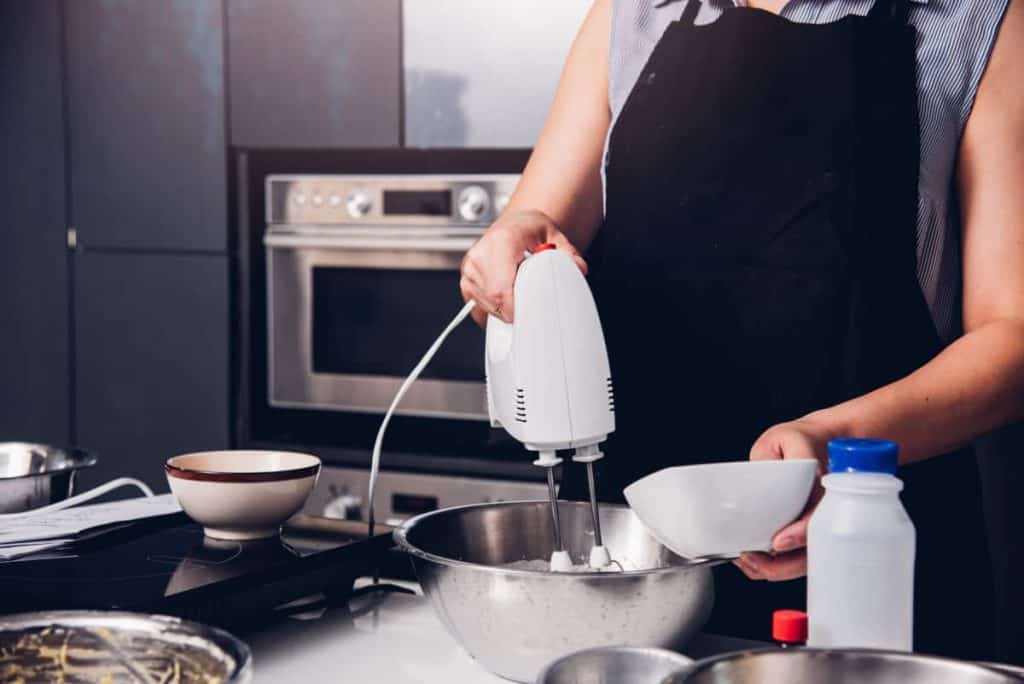
Credit: 123RF.com
How do you make whipped soap?
The easiest way to make whipped soap at home is with a pre-made foaming soap butter. You can buy these online from most soap and body wholesalers.
You can customize pre-made foaming bases to make other DIY products such as body scrubs and facial cleansers. To turn your whipped soap into a scrub, add exfoliants such as sugars and salts.
You can adjust the texture of your DIY soap from thick and creamy, to light and fluffy.
The pre-made foaming soap butter comes in a solid block, which you’ll cut into small chunks and whip up with a mixer.
Supplies you’ll need:
- A hand-mixer, or a stand mixer
- Digital scale (to carefully measure any additives)
- Large mixing bowl
- Cutting board and knife
- Spatula and spoon
- Empty jars and lid
- Optional: piping bag (this is if you want to create a “frosting” look)
Ingredients:
- Premade foaming soap base
- Optional: Skin nourishing carrier oils such as sweet almond oil, jojoba oil, or grapeseed oil
- Optional: fragrance oils or essential oils of your choice
- Optional: micas, or other colorants
- Optional: any other additives you’d like, such as exfoliating sugars or salts
Tip: Follow the instructions on your premade whipped soap base. It should have a guideline for the maximum amount of FOs, EOs, colorants, or additives you can safely add to your soap base (without it turning into a goopy mess). They usually calculate this as percentage.
- Cut, portion, and measure. Using a knife and cutting board, cut off the soap base in small blocks. Use your digital scale to weigh the soap base. If you’re planning to add fragrances, coloring, or other additives, you’ll need to calculate how much you’ll need based on the packaged instructions. Weigh and measure the ingredients and place aside.
- Whip it up! Place the whipped base into a large mixing bowl and mix at medium speed using either a hand mixer or stand mixer. The longer you mix the base, the lighter and fluffier it’ll become. Most whipped bases will double in size. Mix until it reaches your desired consistency.
- Add your coloring, fragrances, and other carrier oils. Slowly add your desired additives and use the spatula to fold it in.
- Continue to whip. Keep using your mixer until you’re satisfied with the texture. You may whip anywhere from 30 to 60 minutes.
- Transfer to a piping bag or scoop into container. If you’d like to create a “frosted icing” look, transfer the whipped soap into a piping bag and fill a container. Otherwise, just scoop into a container.
Enjoy!
Where to store whipped soap
You can keep your whipped soap in the shower if you’re planning to use it there, or beside the sink if using as a hand soap. Otherwise, if you’re planning to keep it for a while, store it in a cool, dry place such as in a bathroom vanity or cupboard. Avoid storing it near sources of direct heat or sunlight.
If you’re storing your jar of whipped soap in the shower, remember to shake out any excess water before replacing the lid!
Note: Some whipped soaps contain preservatives which extend shelf life, while other homemade varieties do not. Follow the directions on the label for best results.
New to making soap? 🧼❓
👉We have a fantastic overview on the whole soapmaking process here: read our Timeless Guide To Soapmaking.
If you would like to see our soapmaking posts organized by topic type, see our Soapmaking Collection.

References
- U.S. Environmental Working Group (EWG), Sodium Cocoyl Isethionate, https://www.ewg.org/skindeep/ingredients/706048-sodium-cocoyl-isethionate-SODIUM_COCOYL_ISETHIONATE/. Accessed January 2022.
- U.S. Environmental Working Group (EWG), Raphanus Sativus (Radish) Root Extract, https://www.ewg.org/skindeep/ingredients/705518-RAPHANUS_SATIVUS_(RADISH)_ROOT_EXTRACT/. Accessed January 2022.

Author: Theresa Tesolin
Theresa is co-founder of RusticWise. She helps people unleash their inner DIY spirit by encouraging them to get dirty and make or grow something from scratch.


